- “PNY GeForce RTX™ 4070 Ti SUPER 16GB XLR8 Gaming VERTO™ EPIC-X RGB™ Overclocked Triple Fan DLSS 3” already exists in your wishlist
Gigabyte GeForce RTX 5060 WINDFORCE 8G Graphics Card – 8GB GDDR7, 128bit, PCI-E 5.0
139.000 OMR
Available in stock
Key Points
- GPU Architecture: NVIDIA Blackwell
- CUDA Cores: 3,840
- Video Memory: 8GB GDDR7
- Memory Speed: 28 Gbps
- Memory Interface: 128-bit
- Memory Bandwidth: 448 GB/s
- Boost Clock: Up to 2,512 MHz
- Ray Tracing: 4th Gen RT Cores
- DLSS: Supports DLSS 4 with Frame Generation
- AI Features: 5th Gen Tensor Cores
- Interface: PCI Express 5.0 (x8)
- Outputs: 3x DisplayPort 2.1b, 1x HDMI 2.1b
- Maximum Resolution: 7680x4320 (8K)
- Power Connector: 1 x 8-pin
- TDP: Approx. 109W (up to 145W)
- Recommended PSU: 450W
- Cooling System: WINDFORCE 2X (dual-fan, alternate spin)
- Form Factor: Dual-slot, compact design
- Fan Technology: Semi-passive 3D Active Fan
- Ideal For: 1080p and 1440p gaming with ray tracing and DLSS
People Also Viewed
-
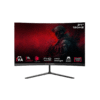 GAMEON GOC24F120VA Pro Series 24" FHD Curved Gaming Monitor | 120Hz | 1ms MPRT | HDMI 2.1 | VA Panel | PS5 Support | Black
34.900 OMR
GAMEON GOC24F120VA Pro Series 24" FHD Curved Gaming Monitor | 120Hz | 1ms MPRT | HDMI 2.1 | VA Panel | PS5 Support | Black
34.900 OMR
-
 Spiral Wrapping Band Cable Management – 30mm Factory Hot Sale Plastic Cable Tidy Under Desk Snake Cable Manager
0.800 OMR – 7.000 OMR
Spiral Wrapping Band Cable Management – 30mm Factory Hot Sale Plastic Cable Tidy Under Desk Snake Cable Manager
0.800 OMR – 7.000 OMR
-
 Galax Vivance-27 QHD Fast VA Display Refresh Rate 165Hz 1ms Response Time G-SYNC Compatible Display 16.7 Million Colors Borderless Design Black
59.000 OMR
Galax Vivance-27 QHD Fast VA Display Refresh Rate 165Hz 1ms Response Time G-SYNC Compatible Display 16.7 Million Colors Borderless Design Black
59.000 OMR
-
 HyperX Cloud Alpha - Gaming Headset OPEN BOX
17.900 OMR
HyperX Cloud Alpha - Gaming Headset OPEN BOX
17.900 OMR
-
 GAMEON GO-CYPHERW-XL-W Gaming Bundle | Keyboard + Headset + Mouse + XL Mousepad | 4-in-1 Combo
12.900 OMR
GAMEON GO-CYPHERW-XL-W Gaming Bundle | Keyboard + Headset + Mouse + XL Mousepad | 4-in-1 Combo
12.900 OMR
Description
✅ Key Specifications Gigabyte GeForce RTX 5060 WINDFORCE 8G Graphics Card – 8GB
| Feature | Specification |
|---|---|
| GPU Architecture | NVIDIA Blackwell (4th-gen RT, 5th-gen Tensor) (gigabyte.com) |
| CUDA Cores | 3,840 |
| Boost Clock | 2,512 MHz (OC) / 2,497 MHz (reference) |
| VRAM | 8 GB GDDR7 @ 28 Gbps (448 GB/s) |
| Memory Bus | 128-bit |
| Interface | PCIe 5.0 x16 (electrically x8) |
| Outputs | 3× DisplayPort 2.1b, 1× HDMI 2.1b |
| Max Resolution | 7,680 × 4,320 (8K) |
| TDP | 109 W (TDP) – ~145 W nominal |
| Power Connector | 1× 8-pin PCIe |
| Recommended PSU | 450 W+ |
| Cooling | Dual‑fan WINDFORCE 2X (Hawk fans, alternate spin, conductive gel) |
| Form Factor | 199 × 116 × 40 mm, 2‑slot |
| Weight | ≈490 g |
| Warranty | 3 years |
1. NVIDIA Blackwell Architecture & Features
The RTX 5060 belongs to NVIDIA’s latest Blackwell GPU generation, built on a refined 4 nm process. It delivers:
- 4th-generation RT cores for hardware-accelerated ray tracing
- 5th-generation Tensor cores, enabling DLSS 4 with multi-frame generation and advanced AI features (gigabyte.com, en.wikipedia.org)
- Streaming Multiprocessors optimized for neural shaders and ray reconstruction
- NVIDIA Reflex 2 with Frame Warp to reduce input latency
- NVIDIA Broadcast support and 9th-gen NVENC for streaming and encoder tasks (gigabyte.com)
Blackwell enhances memory performance through GDDR7, maintaining comparable bandwidth to previous-gen GPUs with broader bus widths (en.wikipedia.org).
2. Memory & Bandwidth
The card is equipped with 8 GB of GDDR7 memory, clocked at 28 Gbps across a 128‑bit bus, delivering 448 GB/s of raw bandwidth . This setup balances capacity and speed, enabling high-resolution textures at 1080p/1440p, though some ultra‑high VRAM-demand scenarios may stretch the 8 GB limit.
3. Performance in Gaming
A. Core Clocks & Game Throughput
With a factory-tuned boost clock of 2,512 MHz, the RTX 5060 WINDFORCE OC surpasses reference speeds (2,497 MHz), enhancing performance (tomsguide.com, quzo.co.uk).
B. Real-World Benchmarks
Independent testing reveals:
- Assassin’s Creed Mirage (1440p Ultra): ~84 FPS average; dips to ~47 FPS (alktech.co)
- Cyberpunk 2077 (1440p RT Low): ~59 FPS; ~94 FPS at 1080p
- Black Myth Wukong (1080p High): ~65 FPS (alktech.co)
- Far Cry 6 (1080p Ultra): ~71 FPS, though inconsistencies emerge due to VRAM limits
These figures underscore strong 1080p performance and respectable 1440p results when settings are adjusted. DLSS 4 enhancements will further boost frame rates, particularly with ray tracing enabled.
C. DLSS 4 & Ray Tracing
DLSS 4’s frame generation dramatically improves performance in demanding titles, as confirmed by early benchmarks yielding out-of-spec performance in games like Doom and Hogwarts Legacy (tomsguide.com). The GPU handles hardware-based ray tracing well, particularly when AI upscaling is in play.
4. WINDFORCE 2X Cooling System
Gigabyte’s proprietary cooler integrates:
- Two 90 mm Hawk fans with eagle-wing design for increased airflow and reduced noise (nextstore.com.kw, gigabyte.com)
- Alternate spinning to reduce turbulence (gigabyte.com)
- Graphene nano lubricant for fan longevity (gigabyte.com)
- Server-grade thermal conductive gel between VRAM/MOSFETs (gigabyte.com)
- Composite copper heat pipes & direct-contact plate (gigabyte.com)
- 3D Active Fan semi-passive cooling; fans stop at idle to reduce noise (gigabyte.com)
- Screen cooling design with exposed heatsink (skroutz.eu)
Users praise its compact size and effective cooling, although some report fan RPM fluctuations and moderate noise at high loads .
5. Power Efficiency & Build Integration
Operating with a nominal TDP of 109 W (reported ~145 W under load), the GPU:
- Draws power from a single 8-pin PCIe connector (quzo.co.uk)
- Recommends a 450W PSU
- Interfaces via PCIe 5.0 x8, ensuring future-proofed bandwidth (quzo.co.uk)
Its modest energy draw simplifies setup in compact or mainstream builds.
6. Display Support & Connectivity
The RTX 5060 WINDFORCE OC delivers broad display support via:
- 3× DisplayPort 2.1b and 1× HDMI 2.1b (quzo.co.uk)
- Supports up to 4 concurrent displays and resolutions up to 8K @ 120 Hz or 4K @ 480 Hz with DSC
- Backing for G-SYNC, VRR, HDR, and HDCP 2.2 (nabava.net)
This setup provides flexibility for gaming, content creation, and productivity.
7. Content Creation & AI Use
A. Streaming & Encoding
Equipped with NVIDIA’s 9th-gen NVENC encoder, the card handles high-quality streaming with low CPU usage. NVIDIA Broadcast enhances audio/video quality via AI noise/filtering tools (gigabyte.com).
B. Creative Applications
The RTX 5060 accelerates workloads in:
- Adobe Premiere/After Effects – smoother playback and faster exports
- Photoshop Lightroom – enhanced detail via GPU AI features (tomsguide.com, bhphotovideo.com)
- Blender/3D rendering – powered by CUDA and OptiX OPS
- RTX Remix & AI-driven editing – thanks to Blackwell’s enhanced RT and Tensor cores (gigabyte.com)
8. Comparison to Alternatives
| GPU Model | VRAM | Bandwidth | Boost Clock | TDP | Price |
|---|---|---|---|---|---|
| RTX 5060 WF OC | 8GB | 448 GB/s | 2,512 MHz | 109–145W | $299 MSRP (quzo.co.uk, nabava.net) |
| RTX 4060 | 8GB GDDR6 | 448 GB/s | ~2.5 GHz | ~115W | ~$299 |
| RTX 5060 Ti | 8/16GB GDDR7 | 672 GB/s | ~2.41 GHz | 180W | $379–429 |
| RX 7700 XT (AMD) | 8GB GDDR6X | 512 GB/s | n/a | ~230W | ~$449 |
The RTX 5060 bridges performance and efficiency. It slightly outpaces the RTX 4060 thanks to DLSS 4 and higher clocks, while maintaining much lower power draw than the Ti variant. The Ti offers more bandwidth and cores but at greater cost and power.
9. Limitations & Trade-Offs
- 8 GB VRAM may limit future AAA or texture-heavy titles (as highlighted by inconsistent Far Cry 6 performance)
- Dual-slot cooler keeps temps good, but can be comparatively louder under load
- PCIe x8 vs x16 isn’t limiting now but remains a theoretical constraint
- Fan RPM variability reported by some users—can be tuned via software
10. Real-World Verdict
- 1080p Ultra gaming: Strong performance, smooth gameplay across modern titles
- 1440p High settings: Achievable with DLSS enabled; solid averages in eSports
- Ray tracing: Enabled with strong FPS due to DLSS 4
- Streaming & creation: Efficient encoding and AI-assisted workflows
- Gaming longevity: DLSS 4 ensures sustained relevance; watch VRAM demands
- Build flexibility: Fits compact cases with low power needs; robust output support

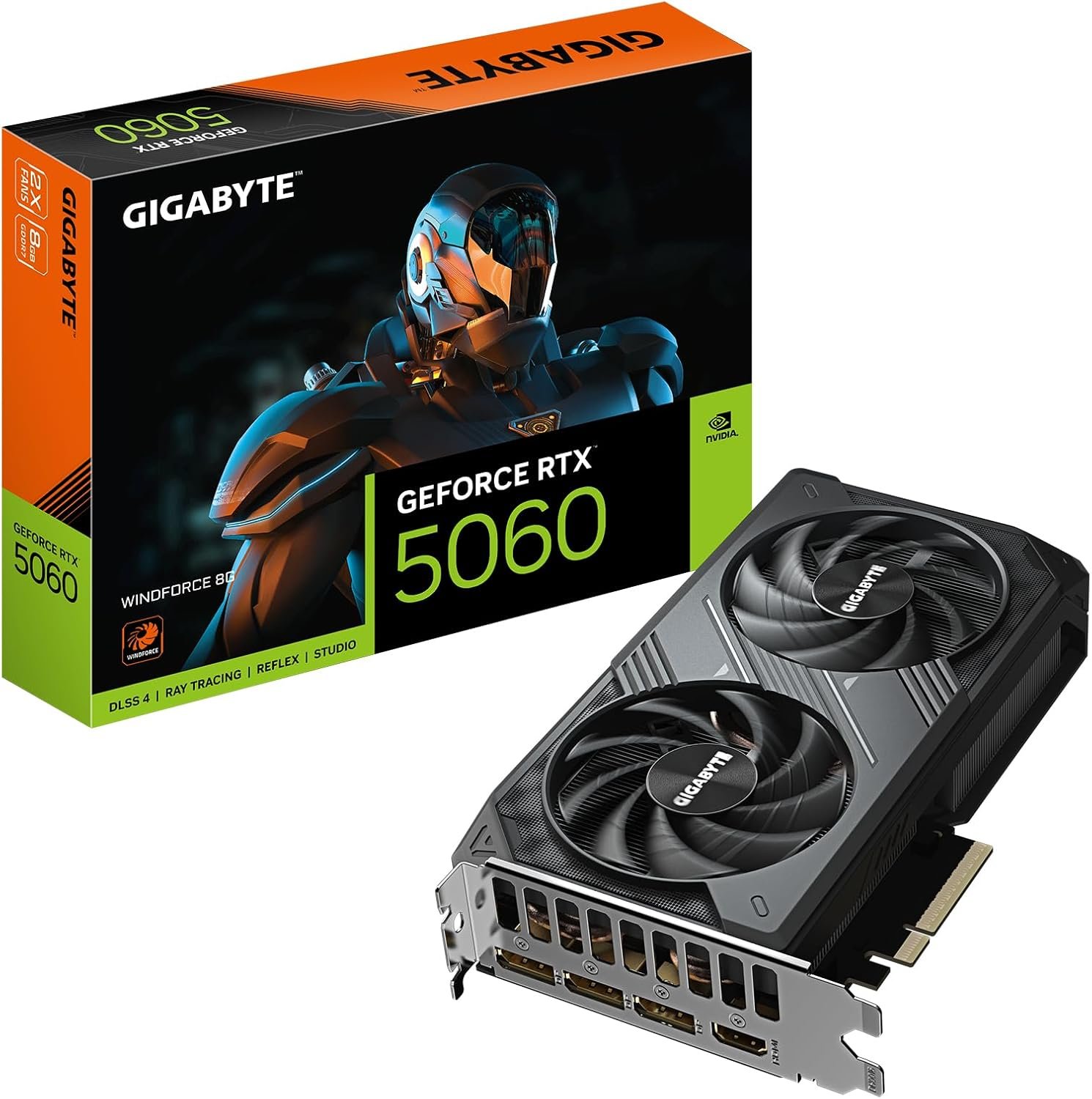
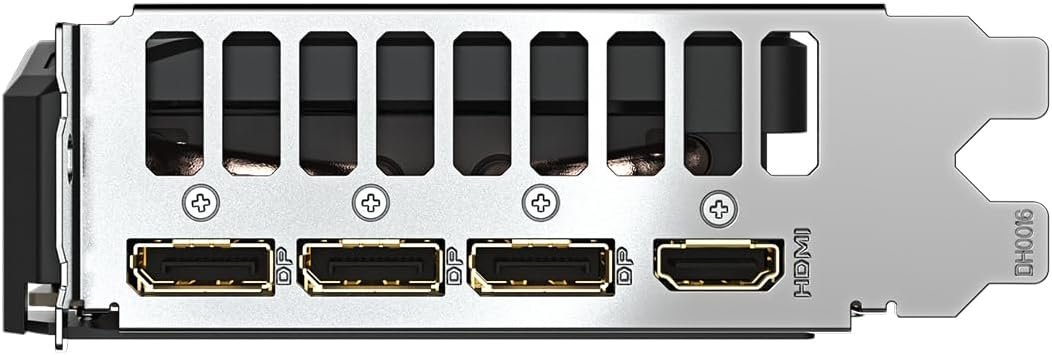

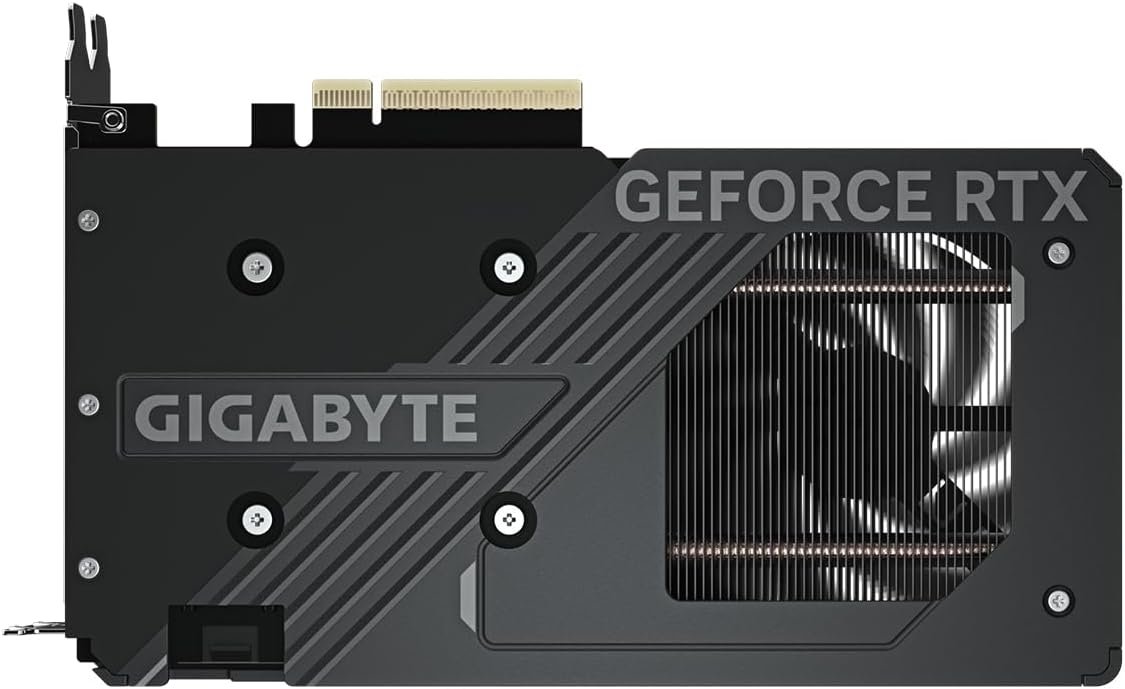

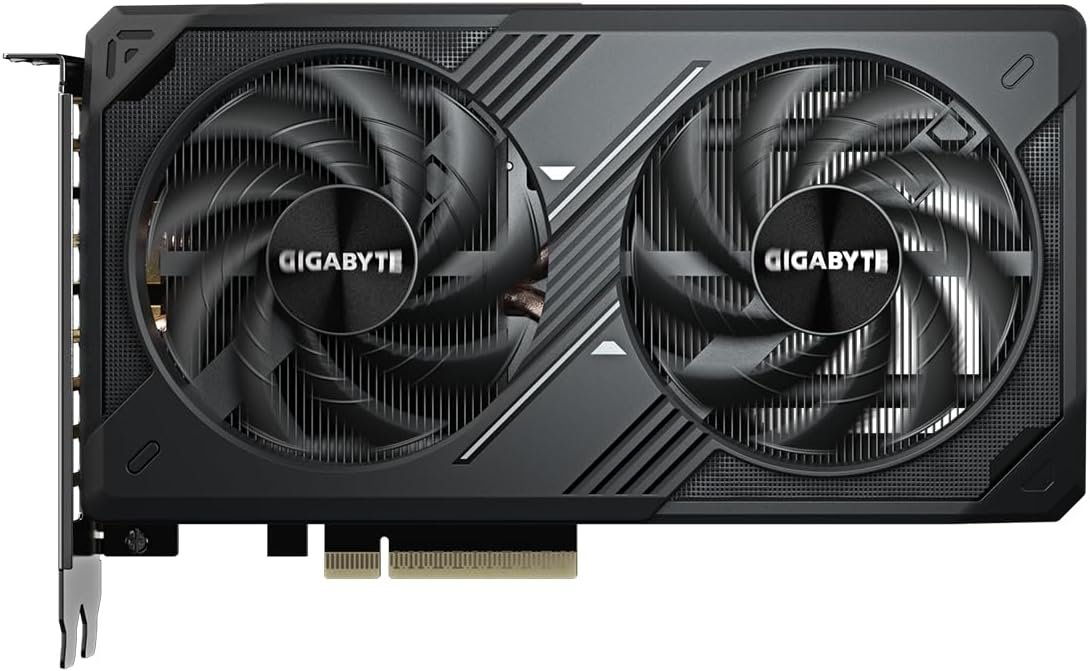
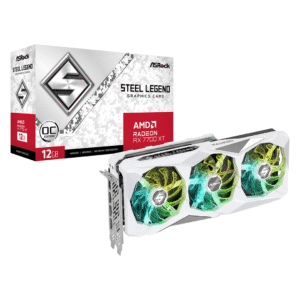
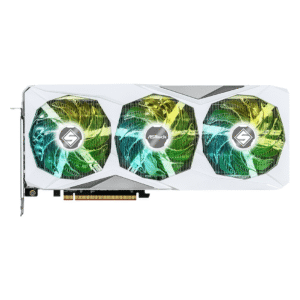

















 No products in the cart.
No products in the cart. 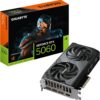
Reviews
There are no reviews yet.